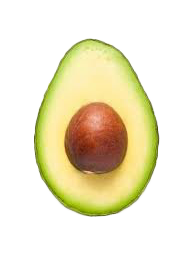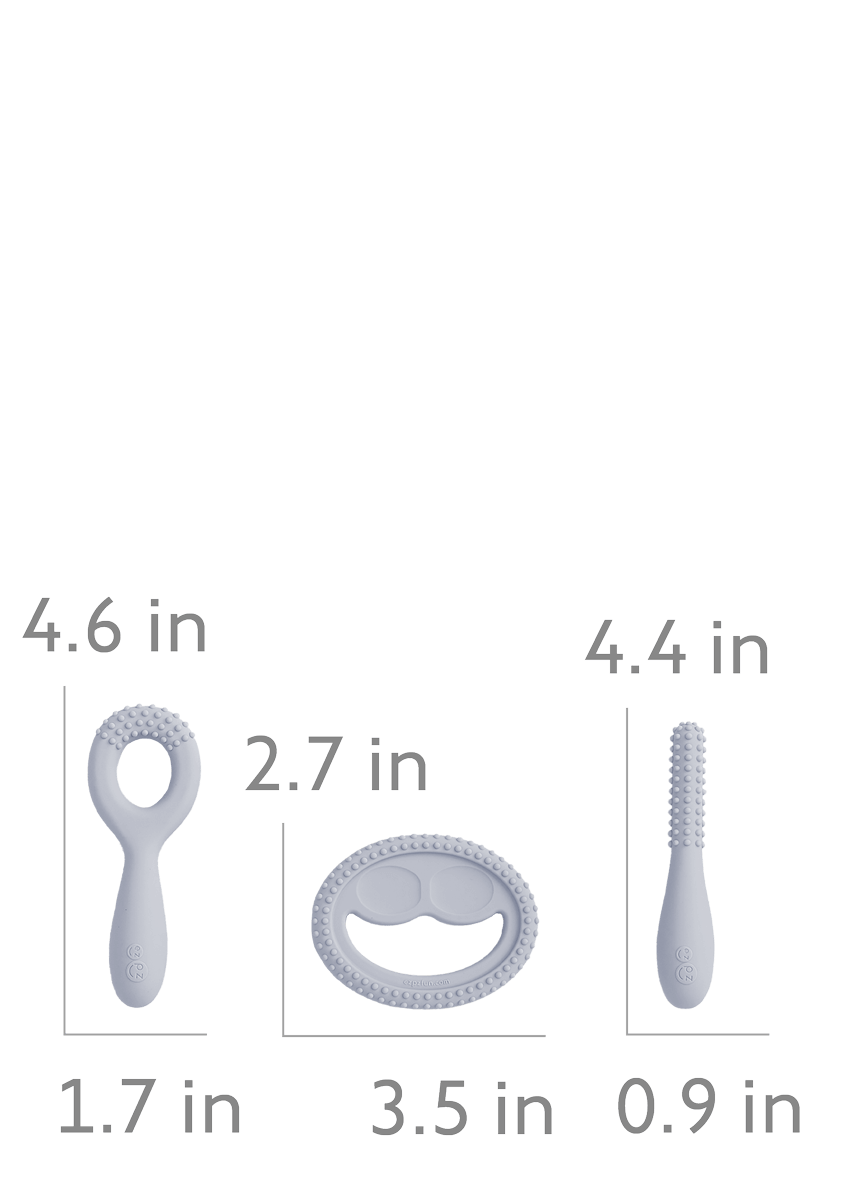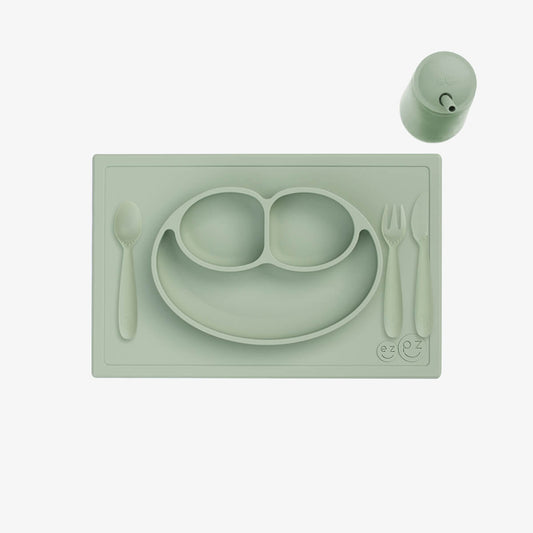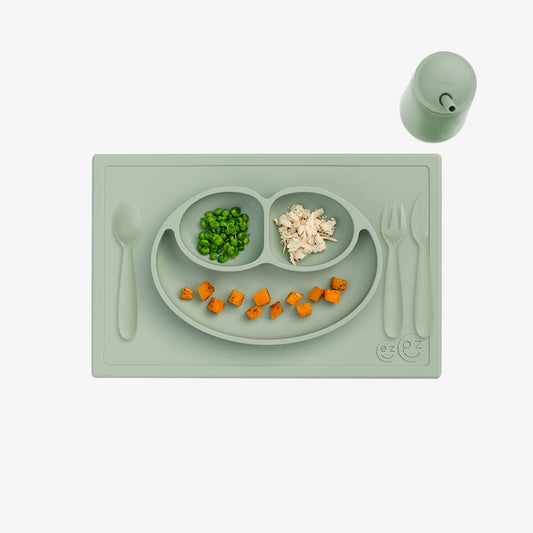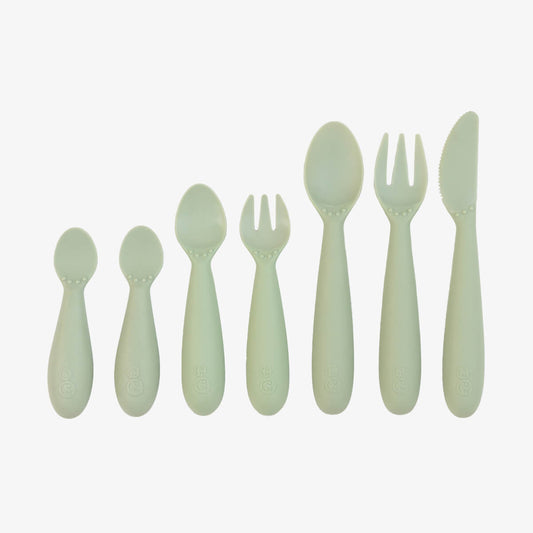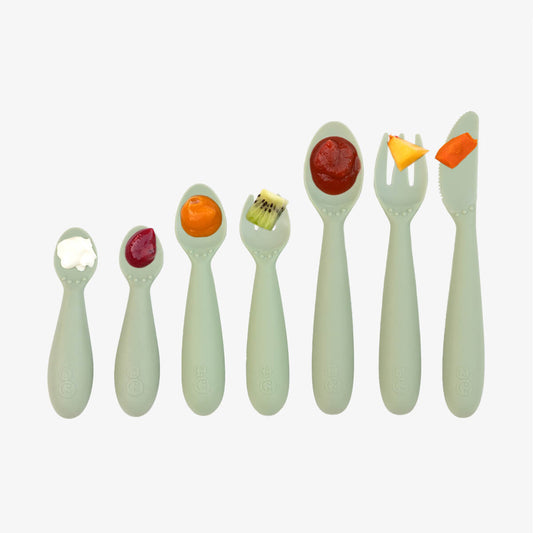5 Tips for Organizing a Playroom
By Dawn Winkelmann, M.S, CCC-SLP
Speech Language Pathologist & Feeding Specialist for ezpz

Keeping a playroom or therapy room clean and functional is time-consuming and overwhelming if you don’t have a plan. When I owned my brick and motor private practice for feeding and speech therapy, I had four playrooms that served hundreds of kids a week. Below I have captured the tips that kept me sane when the broken toys, food, dirty diapers and Legos (ugh, the Legos!) became too overwhelming.
Internalize: To get started, I recommend taking this project on by yourself and setting a timer keep you focused. I find it easiest to clean and purge when I’m alone with a time goal in mind. When you enter your playroom, take a moment to look around and ask yourself the following three questions:
1. What activities happen in this room? Do your kids eat snacks, watch TV, listen to music, craft, do homework and/or take naps in this room?
2. How much time do the kids spend in this room? For example, are they in the playroom on Sunday mornings only or every day after school?
3. How often am I willing to clean this room? Do you want to clean it after every activity, or daily, weekly or every other week?
Answer these questions honestly and move on to the next step!
Simplify: Think about what items your child plays with currently. Have they moved on from the easel and painting stage and are now in to another stage of play? It might be time for a playroom purge!
- Gather a trashcan and a cardboard box labeled ‘Donate.’ Take time to throw out or donate toys or games plus miscellaneous parts.
- This is also an opportunity to discard toys that are no longer age appropriate for your children. You can either add them to the donate box or place them in a bin labeled ‘baby’ or ‘toddler’ if you are planning to have more children or you have a friend that would love your gently used items.
Organize: I am an organizational junkie, so this is the step I just LOVE! But it’s also the step where people get overwhelmed and abort the mission at hand. Let’s look back at Questions #1 and #2 to help you figure out how to organize your room.
- If your kids eat in this room, have a clear plastic bin labeled with the words ‘Dirty Dishes’ and a picture of dirty dishes. That way the kids can have their snack and easily place their dishes in the bin without having to stop play.
- If they watch movies, play video games or listen to music, have bins labeled with words and pictures like ‘Videos,’ ‘Video Games’ or ‘Music.’ It is their job to put things in the correct bin when they are done using it.
- If they are crafting, have a bin for crafts and use products like the Play Mat to help keep the craft organized and the area clean.
- Homework bins for each child are a time saver, too, and can keep kids on task for longer periods. Each bin should have what each child specifically needs, from pencils to lined paper to calculators and fidget toys.
- Board games need to have a home in bins or can be stacked neatly on a shelf. To avoid missing pieces, have a plastic sandwich bag in EVERY board game so that game board pieces, cards and dice have a secure space.
- Having a bin or basket filled with pillows and throw blankets is perfect for nap time or for cuddling on the couch. Again, the kiddos should put them back when they are finished.
- Of course, the more time your children spend in the playroom and the more activities they engage in, the more organized it needs to be. If your kids do homework in an afterschool program, then you don’t need a space or bins for homework. If they could spend hours doing crafts if given the right space, by all means get some ‘mommy time’ back and make them an amazing craft area!
Sanitize: Back to Question #3. How often are you willing to clean and sanitize a playroom? When I had my private practice with different kids going into the room every hour, the room had to be picked up, organized, sanitized and smelling good within 5 minutes. Yes, 5 minutes! But, if you are not willing to clean after every activity (in a perfect world, right?), how can you set up a cleaning routine that works for you? Here are a few tips.
- After children left my playroom, I would start at the back of the room and work my way out. I put away anything that was left out after the kids did their basic cleanup routine. To iterate, I put all of the games and dirty dishes in their correctly marked bins and threw leftover food into the trashcan. I highly recommend a foot-pressed trashcan so that 1) it doesn’t easily tip over 2) kids and pets can’t get into it and 3) the foot press is a life saver when you have your hands full!
- I also recommend having a plastic bin that is ½ part water and ½ part vinegar with a sealed top. I put any toys that need to be sanitized into that bin to soak (this will help ward off colds and cooties, especially when having play dates!). On the bin, I attach two suction hooks and store a clean rag and spray bottle. I grab the rag and dip it into the vinegar to sanitize tables, chairs and clean up crumbs. I place the rag back on the hook and grab the spray bottle (which holds ½ water and ½ lavender essential oils solution) and spray the room as I walk out. Ah, an organized, sanitized and clean smelling playroom…heaven!
Normalize: Creating a basic and easy-to-follow routine for you and your kids will also help you maintain a less mess playroom!
- Make sure your children understand how to open, use and clean up their bins. I have two-year-olds that can follow this routine without any verbal prompts from their family or me. Practicing with them is the key to success!
- The rule I teach families is to only have two toys, games, videos, etc. per child at a time in the playroom. They can get another toy if they choose, but they need to put one toy away first. I love peeking into a playroom, seeing too many toys and calmly saying, “What’s the rule?” All the kids scramble to put away the extra toys they snuck out!
- Help children maintain the routine by being consistent with the rules and being calm when you are giving them. Show your child how to do these routines by modeling what to do and encouraging your child to imitate you.
- Finally, I recommend setting a timer for a visual or auditory 10-minute warning for transitioning out of playtime. Having a timer is critical to a successful cleanup and will decrease tantrums and meltdowns.
What are some of your tips and tricks for organizing a playroom? How do you teach ‘clean up’ to your children? What types of bins, baskets and shelving systems do you use? Let us know how these tips helped you and your family! #ezpzfun #playroom #organize #toddler
Shop Best Sellers

Happy Feeding!
Dawn Winkelmann (M.S, CCC-SLP) is ezpz’s Pediatric Speech-Language Pathologist and Feeding Specialist. She has 28 years of experience teaching parents and medical professionals how to start babies on solids safely and encourage toddlers to overcome picky eating tendencies. In addition, “Ms. Dawn” is the designer of our award-winning feeding products.


